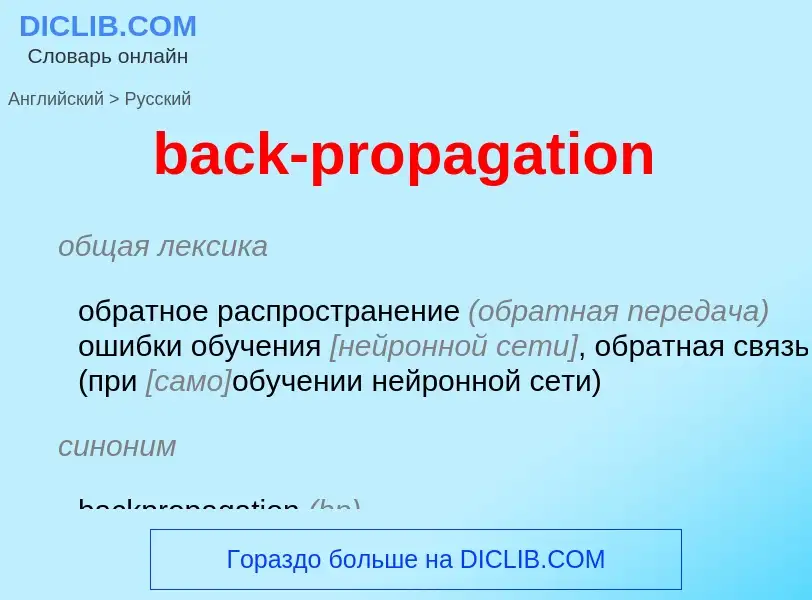Traducción y análisis de palabras por inteligencia artificial ChatGPT
En esta página puede obtener un análisis detallado de una palabra o frase, producido utilizando la mejor tecnología de inteligencia artificial hasta la fecha:
- cómo se usa la palabra
- frecuencia de uso
- se utiliza con más frecuencia en el habla oral o escrita
- opciones de traducción
- ejemplos de uso (varias frases con traducción)
- etimología
back-propagation - traducción al ruso
общая лексика
обратное распространение (обратная передача) ошибки обучения [нейронной сети], обратная связь (при [само]обучении нейронной сети)
синоним
Смотрите также
строительное дело
подкос траншейных креплений
Definición
Wikipedia
In machine learning, backpropagation is a widely used algorithm for training feedforward artificial neural networks or other parameterized networks with differentiable nodes. It is an efficient application of the Leibniz chain rule (1673) to such networks. It is also known as the reverse mode of automatic differentiation or reverse accumulation, due to Seppo Linnainmaa (1970). The term "back-propagating error correction" was introduced in 1962 by Frank Rosenblatt, but he did not know how to implement this, although Henry J. Kelley had a continuous precursor of backpropagation already in 1960 in the context of control theory.
Backpropagation computes the gradient of a loss function with respect to the weights of the network for a single input–output example, and does so efficiently, computing the gradient one layer at a time, iterating backward from the last layer to avoid redundant calculations of intermediate terms in the chain rule; this can be derived through dynamic programming. Gradient descent, or variants such as stochastic gradient descent, are commonly used.
The term backpropagation strictly refers only to the algorithm for computing the gradient, not how the gradient is used; however, the term is often used loosely to refer to the entire learning algorithm, including how the gradient is used, such as by stochastic gradient descent. In 1985, David E. Rumelhart et al. published an experimental analysis of the technique. This contributed to the popularization of backpropagation and helped to initiate an active period of research in multilayer perceptrons.



